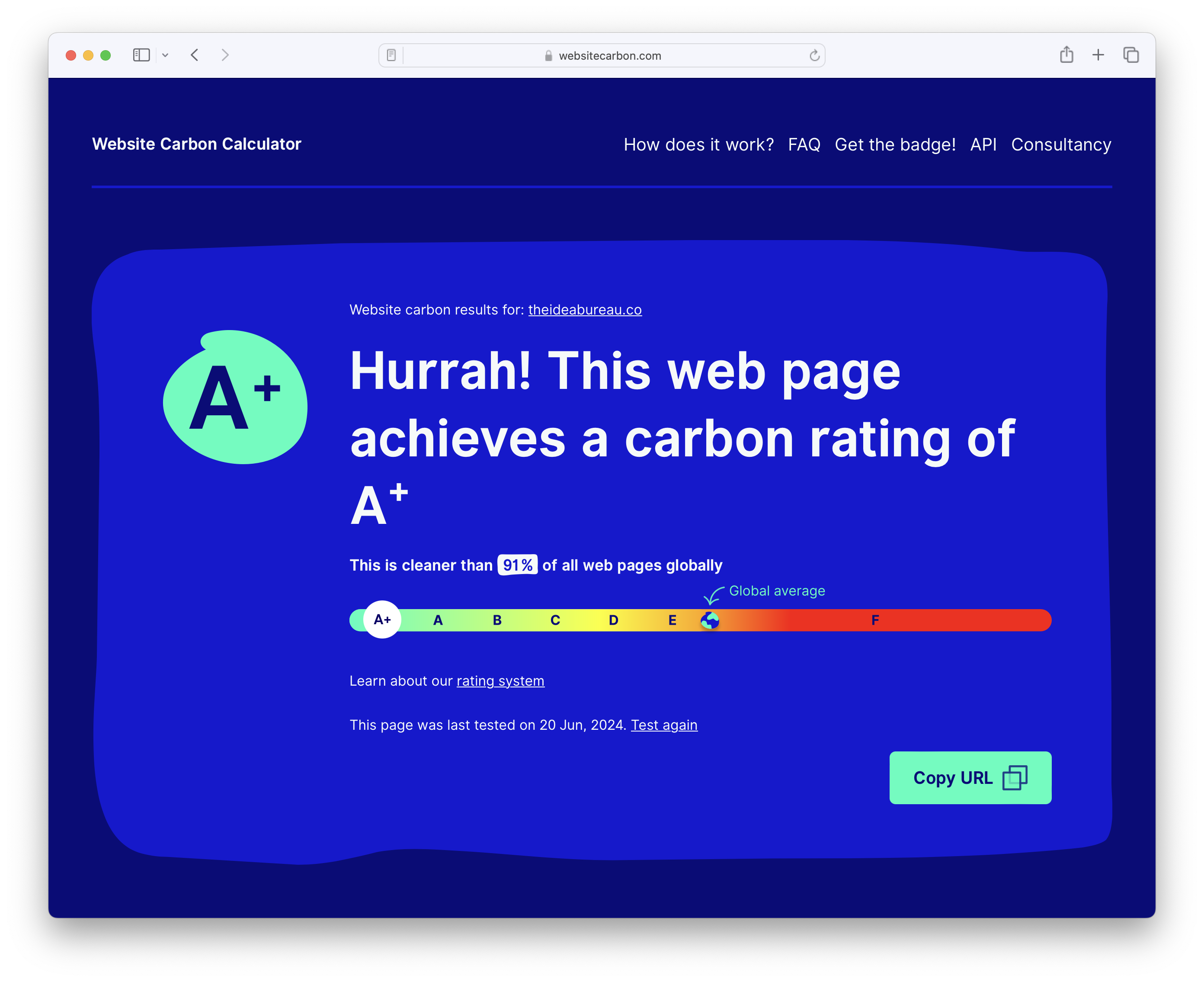What is the carbon impact of your website and why is this important?
Being aware of our carbon impact is becoming increasingly commonplace these days, whether that’s understanding the impact between transport modes, or perhaps how much dirty energy digital infrastructure consumes.
Ensuring your organisation’s website is green not only reduces your impact, but also sends a clear statement of intent to your audience that you care about protecting the planet for future generations.
How can I tell how polluting my website is?
Two key factors contribute to the carbon footprint of your website, whether your hosting provider runs on sustainable energy sources and how well your website is optimised for performance.
Checking how green your web hosting is
Checking if your web host uses green energy is made simple thanks to the Green Web Foundation, which has created a tool that checks your website’s energy status by simply entering your website address.
If your hosting provider doesn’t have a green energy policy all is not lost, the Green Web Foundation also maintain a directory of verified green web hosting providers which highlights alternative companies to consider switching to.

What is your website’s carbon impact?
Having a green web hosting provider is a great start, but the journey through the global internet network that your website takes to reach your audience is mostly out of your control. The best way to limit your impact is to have a well-optimised website.
This means making sure your website download is as small as reasonably possible (for your use case). This can include ensuring your images are appropriately sized, compressed and served in modern formats, being cautious of 3rd party embeds (such as YouTube) and having your website respond quickly to a page request. This is a highly limited set of examples, in reality, good website performance involves a wide strategy of techniques and measurements.
Whilst the ins and outs of website performance can get a little complicated, there are tools that can provide you with a high-level summary of the impact of your website. The Website Carbon Calculator does a great job of this, simply enter your website URL and it’ll tell you how your website’s impact stacks up against the global average, as well as how much CO2 each page load produces and what that equates to in real-world terms.

Why does this matter?
The Peoples’ Climate Vote, conducted by the United Nations with over 1.2 million responses, shows that the majority of people agree that climate change is an emergency. Your audience is getting more clued up on carbon reduction and this will surely become a higher priority for them as time goes on.
As is sometimes the case, improvements in one area will also benefit others. We mentioned how web performance is linked to carbon impact, but good web performance also makes for better user experiences and engagement. Reducing your website impact will help cut down operational costs too, making the most with fewer resources so your digital operations aren’t excessive for your needs.
The wonderful thing about carbon reduction on the web is that results scale. Big or small improvements can accumulate to make significant impacts when scaled up to 10k, 100k or 1 million page views.
If you’re unsure what the next steps are for carbon reduction for your organisation, contact us to arrange a website carbon audit.